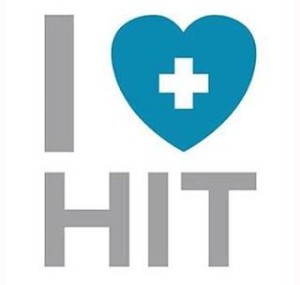 A cadre of pioneering Americans has been meaningfully using personal health information technology (PHIT), largely outside of the U.S. health care system. These applications include self-tracking and wearable health technologies, mobile health apps, and digital medical tracking devices like glucometers that streamline tracking and recording blood glucose levels.
A cadre of pioneering Americans has been meaningfully using personal health information technology (PHIT), largely outside of the U.S. health care system. These applications include self-tracking and wearable health technologies, mobile health apps, and digital medical tracking devices like glucometers that streamline tracking and recording blood glucose levels.
In the meantime, only 21% of doctors surveyed by Accenture currently allow patients to have online access to their medical summary or patient chart – very basic components of the electronic health record.
We know what’s primarily driving health providers’ adoption of health IT: namely, the HITECH Act’s provisions for incentives. But what’s driving consumers’ adoption of personal health IT? Among the driving forces are peoples’:
0 Demand for more self-service, documented by another Accenture survey on consumers’ desire for DIY health via eHealth service options
o The growing supply of consumer-facing digital health devices that are artfully designed, easy to use, and well-priced; this was a key message emanating from the 2013 Consumer Electronics Show where digital health was a fast-growing category on the show floor
o A growing recognition among a cadre of activated patients that greater health and clinical engagement can yield better health outcomes and lower out-of-pocket costs downstream, when conditions can exacerbate.
As the health industry promulgates value-based and accountable care, the growth of consumers’ role is undeniable in working to achieve the Triple Aim – especially to help bend the cost curve. It’s been long assumed that people need a partner in the health system for sharing decision-making. For decades, that most trusted linchpin in the U.S. health system for health engagement has been the physician.
There is evidence that some of the most health-engaged people may trust physicians less than those who are not very engaged. The Altarum Institute Survey of Consumer Health Care Opinions Spring/Summer 2013 found that people most likely to act like consumers in health care (like shopping for health care or making key health decisions) were generally less trusting of the motives of their health care providers compared with people who were less health-engaged. Some of the manifestations of “patient alienation” included feelings that doctors didn’t have the peoples’ best interests in mind, made clinical decisions based on a profit motive, or didn’t respect peoples’ time or budgets.
At the same time, more consumers have been turning to another source that’s growing in trust: online health resources, from information portals to patient communities. Wolters Kluwer found that two-thirds of people seeking medical information online say they trust the information. 2 in 3 people also claimed to have never misdiagnosed themselves when using online medical information resources.
Providers are at-risk of further eroding the trusted doctor-patient relationship if they don’t engage in the new consumer demand for transparency. In the case of health IT, that means fully opening up the digital health kimono — electronic health records — and for patients who seek even greater details, embracing Open Notes.
The health care system is moving from volume-to-value for payment. This begs the question: value for whom? If it’s for the patient, then enabling a truly consumer-driven health system means empowering people with the full complement of information that enables a healthy health care marketplace.




 I'm in amazing company here with other #digitalhealth innovators, thinkers and doers. Thank you to Cristian Cortez Fernandez and Zallud for this recognition; I'm grateful.
I'm in amazing company here with other #digitalhealth innovators, thinkers and doers. Thank you to Cristian Cortez Fernandez and Zallud for this recognition; I'm grateful. Jane was named as a member of the AHIP 2024 Advisory Board, joining some valued colleagues to prepare for the challenges and opportunities facing health plans, systems, and other industry stakeholders.
Jane was named as a member of the AHIP 2024 Advisory Board, joining some valued colleagues to prepare for the challenges and opportunities facing health plans, systems, and other industry stakeholders.  Join Jane at AHIP's annual meeting in Las Vegas: I'll be speaking, moderating a panel, and providing thought leadership on health consumers and bolstering equity, empowerment, and self-care.
Join Jane at AHIP's annual meeting in Las Vegas: I'll be speaking, moderating a panel, and providing thought leadership on health consumers and bolstering equity, empowerment, and self-care.